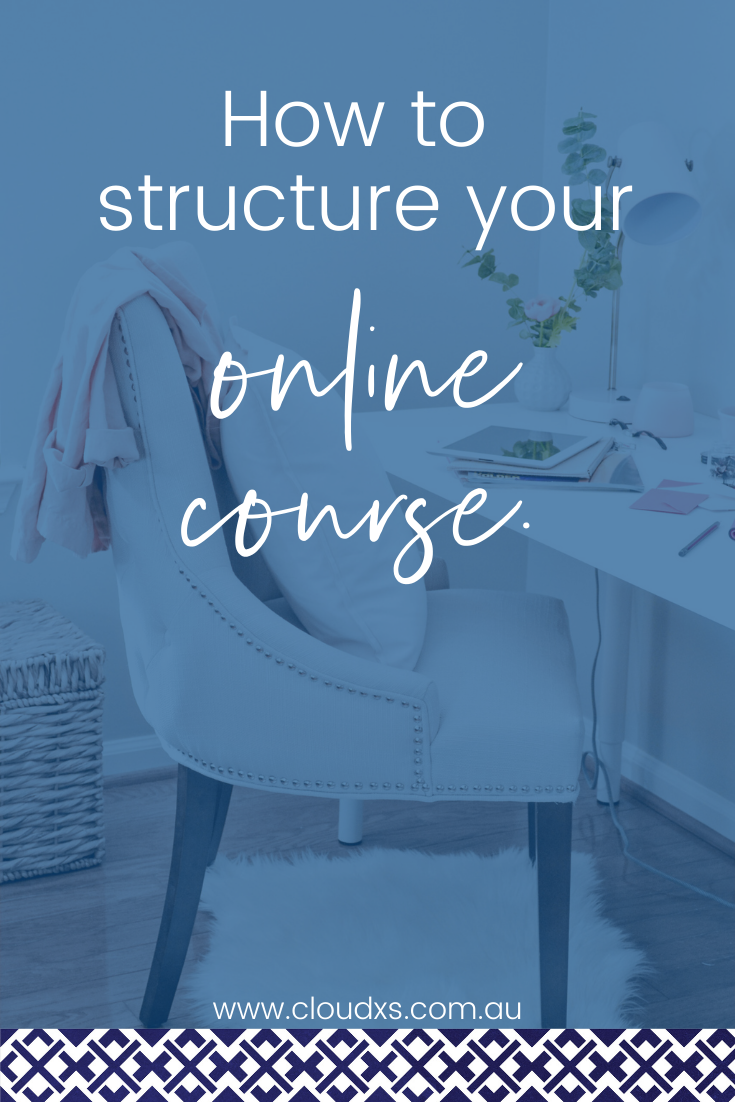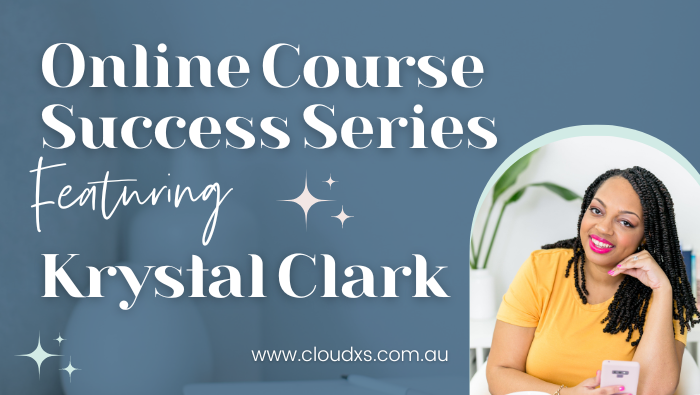
How to Structure Your Online Course
It’s vital to make sure your content makes sense to an online user
Creating an online course for your business is hugely beneficial.
You know you’ve got a wealth of experience and knowledge you can share with your audience, and creating an online course is the best way to get this out to the world.
Yes, it takes some time and planning, but when it’s done, it’s a brilliant little passive income earner that doesn’t need much input from you (depending on how you set your course up that is).
Some people choose to have an entirely online course with limited input (i.e. a couple of coaching calls or email access to the tutor), and others prefer the more hands-on approach where they organise weekly zoom calls with their group of students and so on.
One thing to keep in mind is that online learning is different to face to face learning.
There are a few things to keep in mind when you’re mapping out your course structure. If you’ve never tried a mind map, you should get onto it! We use Miro, google docs or good old pen and paper!
Why you need to plan the structure of your online course
When you have so much content you can use, and so many ideas in your head, you’ll be lost if you don’t plan out how your course will look online.
Courses without planning risk having duplicate content, missing content, or being presented in a way that’s confusing to your students. You want the student to enjoy the experience so they can shout out to the world how great it was, so structuring your course in a way that is easy to digest is important.
You need your course content structured in a way that your students can understand and achieve their learning objectives.
Here are the top 5 things to consider when structuring your online course
1. Focus on outcomes
For your online course to be successful, you need to be 100% clear on what you want your students to ultimately achieve, not only by completing your course but with each lesson and module. What is the desired outcome for your student?
Keep this in mind at all times when you’re planning the structure of your online course. Do you want you students to:
- Watch a video or read the material
- Submit assignments
- Join a call
- Self-learn
- Take a quiz
- And so on
2. Cater to learning styles
You’ll need to consider that your students will have different learning styles. Some may be visual learners, where others may need to read the material. And they may need to re-watch or re-read a couple of times for the information to sink in!
Some students could be a nice blend of both styles and appreciate both the visual and written course material. In our experience, we’ve found that courses that have a mix of videos along with workbooks, notes and a copy of the presentations are well received by students.
3. Outline your course
This is where a mind map comes in handy. Or a big sheet of paper. Or even a spreadsheet. Use whatever works for you to plan your course outline.
To plan your course:
- Think of a name! This should describe what your students will learn with a hint of the outcome. This will often be your URL, so try to keep it shortish.
- Separate your content into digestible modules making sure you only focus on one outcome per module.
- For each module, layout dot points for the lessons with everything your students will need to know to fulfil their learning. Include your support material (workbooks, pdfs, quizzes, assignments etc.)
- Determine how your students will receive the lessons. I.e. will they be drip-fed on a specific date, do they need to complete one module to do the next or is it self-paced, and students can access all the material when they want to?
- Consider including an introductory module where you can outline any prerequisites or support material, and can articulate what your students can expect throughout the course and any information on how to use the course player.
- Create a completion strategy, so your students know and feel that they’ve satisfactorily completed your course. Let them know what they’ve achieved, give them a certificate, encourage them and offer guidance on their next steps. It’s also useful to include a survey at the end for feedback.
4. Know your course platform
It would help if you had some idea on how your online course platform looks and performs. Going in blind means you’re may waste time planning your structure a particular way only to find out it won’t work on your chosen platform.
Videos and presentations with a voiceover are a great way to communicate with students. Remember that if you have outcomes along the way in the video that you’re asking the student to complete, you may need to break the content down into lessons so the student can follow along and complete things as they go.
5. Determine your level of input
From the get-go, you need to decide if your course is going to support students along the way, mark assignments or quizzes, have open discussions on lessons, or whether it will be entirely self-paced.
Please consider your students here. Most students, at some point, may want access to their tutor – to ask a question, to get support, to gain clarity. If your course is self-paced, offering a coaching call or email contact is a great way to show your students that you are more than a course creator, but the expert they can trust.
Want to see how to plan and build your online course?
The team at CloudXS Digital are Thinkific experts. We love this online course platform so much that we’ve specialised in it to help our clients build online courses that work. We know how to put it all together (and make it look gorgeous) and we know the tech glitches that can happen, and how to fix them before your course is handed over to you.
But, if you’re a curious business owner who’d like to see how Thinkific works first, I invite you to join our Thinkific Walkthrough Course. This free course shows you from the student perspective how the Thinkific platform works, giving you an insight into how the layout and lessons look.
It’s a great way to start planning the structure of your course.
Would you prefer us to build your online course for you?
If you’d prefer to get your online course out of your head and online without doing the hard yards, chat to us today. We’ll love to find out your ideas for your course, then help you to create it, build it and launch it in the online space. It’s our thing and that’s why we specialise in it.
You can find more info on the CloudXS Digital website.
You can see some of our Client Course Designs in our Portfolio page

Alethea Tuitahi
Online Course Designer & Founder
Alethea specialises in creating beautiful, conversional, student focusd online courses. Allowing course creators to deliver their course or program to the world… sans tech frustrations and problems. Need help building your online course? As a Thinkific specialist, Alethea is here to help! Book in a free call here.











